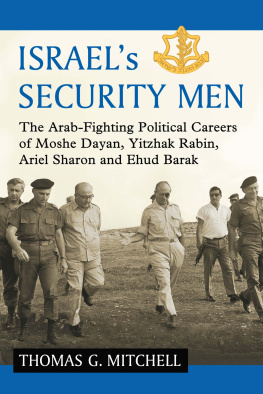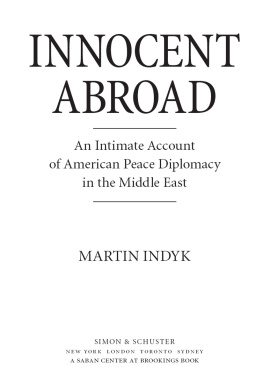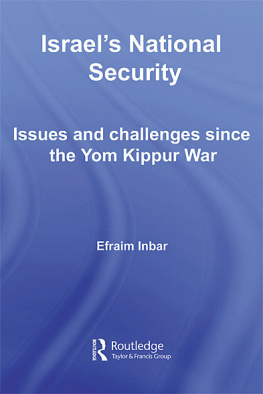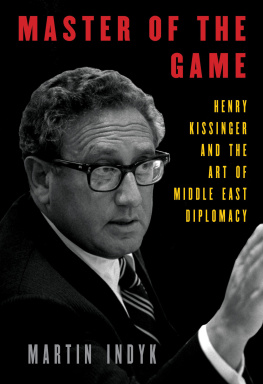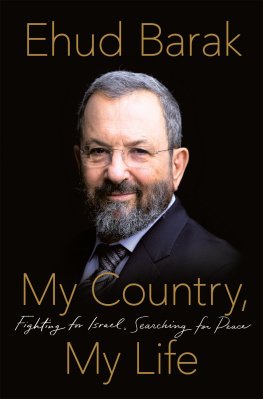
Also by Thomas G. Mitchell
Israel/Palestine and the Politics of a Two-State Solution (McFarland, 2013)
When Peace Fails: Lessons from Belfast for the Middle East (McFarland, 2010)
Israels Security Men
The Arab-Fighting Political Careers of Moshe Dayan, Yitzhak Rabin, Ariel Sharon and Ehud Barak
Thomas G. Mitchell

McFarland & Company, Inc., Publishers
Jefferson, North Carolina
All maps by George Colbert
LIBRARY OF CONGRESS CATALOGUING DATA ARE AVAILABLE
BRITISH LIBRARY CATALOGUING DATA ARE AVAILABLE
e-ISBN: 978-1-4766-1759-6
2015 Thomas G. Mitchell. All rights reserved
No part of this book may be reproduced or transmitted in any form or by any means, electronic or mechanical, including photocopying or recording, or by any information storage and retrieval system, without permission in writing from the publisher.
On the cover: Minister of Defense Moshe Dayan (center, with eyepatch) touring the southern front with Ariel Sharon (far left rear) in September 1967 (photograph by Ilan Bruner, National Photo Collection, State of Israel)
McFarland & Company, Inc., Publishers
Box 611, Jefferson, North Carolina 28640
www.mcfarlandpub.com
Acknowledgments
There are a number of people I would like to thank for their role in producing this book. First, Id like to thank George Colbert, the artist from New York who drew the maps of the peace agreements and of the 1982 Israeli invasion of Lebanon (originally used in Howard Sachars A History of Israel from the Rise of Zionism to Our Time) for permission to reprint them here. Thanks also to Jennifer Rowley for putting me in touch with Mr. Colbert. I would also like to thank the Israeli National Photo Collection for providing the photos used in this book. Thanks to Jeff Bezos and Amazon for facilitating my purchase of the books used in my research, which would have been impossible twenty years ago. I would like to thank my parents, James and Rita Mitchell, for providing me the financial assistance to research and write this book, as well as my two previous books. Their frugality and wise investing over the decades made this writing possible.
Preface
In 1968 Israeli maverick journalist and future peace activist Uri Avnery wrote that Moshe Dayan was an Arab fighter, one type among a class of politicians common among second generation immigrant societies (that is, settler societies) involved in conflicts with the native populations of their lands. As an American interested in history, I was intrigued by this short remark (on which Avnery did not elaborate).
I first started writing on this topic in May 1999, when Ehud Barak was elected prime minister. I then wrote the draft of a book entitled The Rivals, organized around the political rivalry for control of the Labor Party between Moshe Dayan and Shimon Peres on the one hand and Yigal Allon and Yitzhak Rabin on the other. I began the book with the Arab Revolt of 19361939 and ended it with Peress failed presidential bid in 2000. I was never quite satisfied with it, and it remained a work in progress. I eventually added Ezer Weizman and Ariel Sharon to the cast of characters. Weizman was in some ways a minor member of the antiRabin camp and Sharon was introduced in order to cover the Likud after 1980 when Weizman left. The main theme of the book was that the leading doves of Israeli politics were really pragmatic hawks who started out as antiArab activists in the security field and eventually became supporters of compromise peace based on the land for peace formula of Security Council Resolution 242. (Former military intelligence director General Yehoshafat Harkavi wrote on this topic in a short book published in 1977, Arab Strategies and Israeli Responses.)
In 2002 I returned to exploring Arab-fighter politicians by looking at Indian-fighter politicians in the United States in the late eighteenth century and first half of the nineteenth century, and also at African-fighter politicians in South Africa in the second half of the nineteenth century and during the twentieth century. Because the publishing strategy of my publisher, Greenwood Press, changed, the focus of the book was placed on Indian fighters (with an appendix that discussed Arab fighters in Israel). In 2004 I researched and wrote a book looking at the Israeli class of Arab fighters, although I never published it. I had first devoted a paragraph to the topic in my book Native vs. Settler: Ethnic Conflict in Israel/Palestine, Northern Ireland and South Africa, and I had read the chapter on Moshe Dayan in Uri Avnerys Israel Without Zionism and wanted to explore the topic further. In 2002 I did basic research to see if I could find any other cases of elected military politicians besides those in Israel, South Africa, and the United States. I defined a case as at least four figures at the national level who came into politics in at least two separate waves. I looked at all of the British settler colonies and then at the European colonial powers that were democracies, and the search came up negative.
With the announced retirement from politics of Ehud Barak at the start of 2013 and the death of Ariel Sharon a year later, I decided that now would be a good time to pursue a book combining the 1999 and 2004 efforts. The first chapter is devoted to an overview of the phenomenon of military politicians in Israel, while the rest of the book is devoted to a detailed examination of the biographies of four Arab-fighter politicians who were involved in negotiations with the Arabs. Three of these cover all of the Arab negotiations, from the armistice agreements of 1949 through the discussions with King Hussein of Jordan in the late 1960s and 1970s, the Kissinger separation-of-forces agreements and the Sinai II interim agreement in the mid1970s, the Camp David process from 1977 to 1979 with Egypt, and finally the Oslo process between Israel and the Palestinians from 1993 to 2000. Ariel Sharon was not a participant in any of these negotiations, but he is included because he was in many ways the most successful Arab-fighter politician and had the longest career of violent interaction with the Palestinians of any Israeli Arab fighter. He was also more typical of the Arab fighters on the Israeli Right, and he figures in the careers of the other three figures either as a soldier or as a politician.
The four figures I have chosen are important both because of their successful political careers and because of their importance to Israels Arab policy. There are two additional politicians whom I could have chosen, but they were left out either because they can be discussed piecemeal or because there is little readily available biographical material for them. Ezer Weizman I will cover in the discussions on Dayan and Rabin. His major importance was as the Likuds first defense minister from 1977 to 1980. Weizman played a secondary role in the negotiations with Egypt by cultivating good relations with the Egyptian leadership, but the actual negotiating was done mainly by Moshe Dayan. The other individual was Yigal Allon of Mapam, Ahdut HaAvoda and the Labor Party. He was Israels first significant Arab-fighter politician along with Moshe Carmel, but he lost out to Dayan in his attempt to make it into the second rank in 1967 and he succeeded only under his former subordinate Rabin in 1974. He played an important role in the negotiations with Egypt in 1975, but a less important role than either Yitzhak Rabin or Shimon Peres. Allon wrote two books, one on defense policy and one on his youth in Mandatory Palestine, and the single biography of him, by Israeli historian Anita Shapira, is devoted mainly to his military career in the Palmach and as Israels leading field commander in the 1948 War of Independence; Shapiras biography includes only a 23-page epilogue on his subsequent political career. Allons main importance to Israeli policy was his authorship of the Allon Plan in July 1967 (which I discuss in conjunction with the Dayan Plan). Allon and Carmel are also different from later Arab-fighter politicians in that most of their military careers were spent in the pre-state Hagana militia rather than in the Israel Defense Forces (IDF).
Next page
